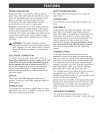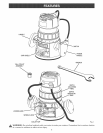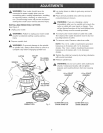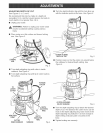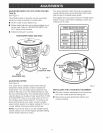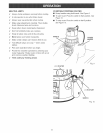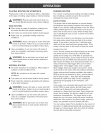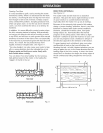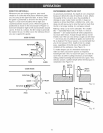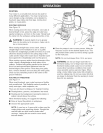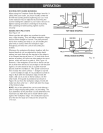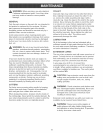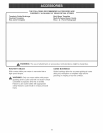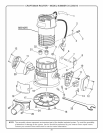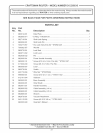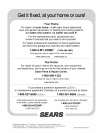
DIRECTION(INTERNAL)
Wheneveryouareroutingagroove,yourtravel
shouldbeina directionthatplaceswhateverguide
youareusingattheright-handside.Inshort,when
theguideispositionedasshowninthefirstpartof
Figure13,tooltravelshouldbeleftto rightand
counterclockwisearoundcurves.Whentheguideis
positionedasshowninthesecondpartof Figure13,
tooltravelshouldberighttoleftandclockwisearound
curves.Rfthereisachoice,thefirstsetupisgenerally
theeasiesttouse.Ineithercase,thesidewaysthrust
youuseisagainsttheguide.
GUIDEOUTSIDE
ROTATION
THRUST
ROTATION
FEED
GUIDE
GUIDEINSIDE
ROTATIONC_
GUIDE@ ÷
ROTAT OH /
FEED
THRUST
Fig. 13
DETERMINING DEPTH OF CUT
As previously mentioned, the depth of cut is important
because it affects the rate of feed that, in turn, affects
the quality of the cut (and, also, the possibility of
damage to your router motor and bit). A deep cut
requires a slower feed than a shallow one, and a too
deep cut will cause you to slow the feed so much that
the bit is no longer cutting, it is scraping, instead.
Making a deep cut is never advisable. The smaller
bits -- especially those only 1/16 inch (1.6 mm) in
diameter -- are easily broken off when subjected to
too much side thrust. A large enough bit may not be
broken, but if the cut is too deep a rough cut will result
-- and it may be very difficult to guide and control the
bit as desired. For these reasons, we recommend that
you do not exceed 1/8 in. depth of cut in a single
pass, regardless of the bit size or the softness or
condition of the workpiece. See FiXTure14.
To make deeper cuts it is therefore necessary to
make as many successive passes as required,
lowering the bit 1/8 in. for each new pass. In order to
save time, do all the cutting necessary at one depth
setting, before lowering the bit for the next pass. This
will also assure a uniform depth when the final pass is
completed. See FiXTure 15.
DEPTH
OFCUT
__ WIDTH
Fig. 14
1ST.
2HD. [7 PASS
PASS _U m
2ND.PASS
Fig. 15
15



